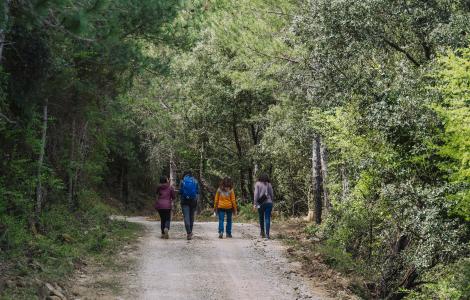When ‘flying blind’, chaotic searching could be a good strategy

When an animal has limited information about its environment, a chaotic movement pattern could be an efficient strategy for finding what it needs. For mollusks, this could result from internal neural processes. Understanding the mechanisms for chaos generation and its connection with search behavior could help apply these types of patterns to research on humans.

Following a random search pattern could be beneficial to the snail Hydrobia ulvae when looking for food. The origin of movement patterns without a set direction could lie in chaotic neural processes. Frederic Bartumeus, ICREA, CEAB-CSIC and CREAF researcher and coauthor of the study published in Nature Scientific Reports says “these are probably motor neurons, located near the foot of the animal or closer to the brain, giving this chaotic signal".
This search strategy, called Lévy walks, has been found over a wide variety of organisms. This movement pattern has a fractal structure, and optimizes search success in conditions where the items to be found may be either close or far away.
While evolution tends to avoid random search behaviors, in this case it may have selected for this kind of chaotic exploration. Bartumeus explains that this can still occur in some extreme cases. “While the greater cognitive capacities of an animal serve to minimize situations where information about the surrounding are limited, it can still be good to have a strategy of desperation, a fallback to be used in situations where the search becomes unusually difficult. In such cases, a random search pattern can give good results".

Chaotic searches can also be useful for humans
Chaotic searches may be helpful in human research when the environment provides few clues about how and what to look for. Frederic Bartumeus notes, “seeing what animals do and how evolution has shaped movements in these contexts with little information can contribute to the creation of ‘bioinspired’ search algorithms. This could be useful in rescue operations —where information is often quite limited—, environmental sampling systems for data gathering, or internet searches”.
By studying animals in situations where they can only processes a very limited amount of information, scientists can learn about what strategies are used and are able to identify the key elements contributing to randomness. “It is better to study simple animals rather than humans for the reason that with humans it is necessary to manipulate the contexts for information very carefully and remove certain cognitive biases, all of which makes it very difficult”, says Bartumeus.

Random walk in two dimensions with 25 thousand steps
Noticias relacionadas

El IPBES publica dos informes para transformar la forma en que nos relacionamos con la naturaleza, conservarla y sobrevivir

El impacto social de la investigación se consolida en la cultura científica del CREAF


